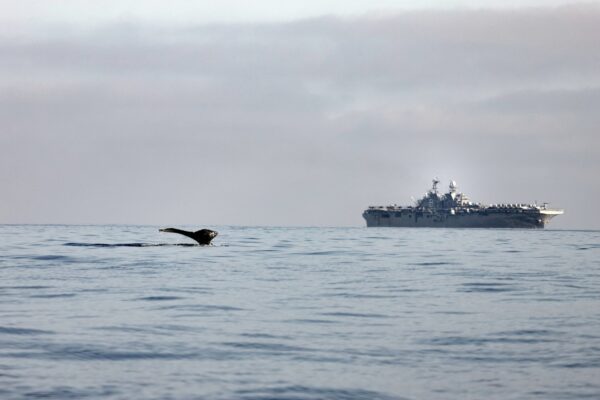The Convention on the Conservation of Migratory Species of Wild Animals (CMS) released a landmark report aimed at addressing a major threat to marine species: noise pollution.
Noise pollution is known to cause significant disturbance to marine wildlife, including migratory species protected under CMS such as whales and dolphins (and their prey). Such impacts can result in adverse changes to entire marine ecosystems.
Animals exposed to elevated or prolonged anthropogenic noise can suffer direct injury and temporary or permanent auditory threshold shifts, compromising their communication and ability to detect threats and find food, sometimes leading to death. Anthropogenic noise can displace wild animals from critical habitats, including from their migration routes, and mask important natural sounds, such as the call of a mate.
The report focuses on three major sources of noise pollution: shipping, seismic airgun surveys (used in oil and gas exploration) and pile driving (used for offshore wind farms and other marine infrastructure). It provides, for the first time, practical guidance on the Best Available Technology (BAT) and Best Environmental Practice (BEP) to reduce noise from these activities.
Solutions to mitigate three important sources of noise pollution: shipping, seismic airgun surveys and pile driving
The report highlights the application of quieting technologies that reduce sound at the source as the most effective way to reduce the negative impacts of underwater noise on marine wildlife. These quieting methods and practices may also have additional benefits, such as reducing greenhouse gas emissions and contributing to the mitigation of climate change – another major threat to marine wildlife.
Despite the application of best available quieting technologies, certain activities may still have an impact on marine life, and therefore further mitigation measures are often necessary. These could include avoiding areas or particular times of the year that are critical for wildlife, performing detailed environmental assessments before conducting surveys, effective regulation, strong enforcement, robust monitoring and research to improve our understanding of the impacts of underwater noise.
Noise pollution: a hidden threat that wreaks havoc on marine wildlife
From the smallest plankton to the largest whales, noise pollution disrupts the harmonious underwater symphony that marine species create and rely on for survival. Noise pollution is not only detrimental to the health and disruptive to the natural behaviour of marine species, but it can also impact their critical life processes such as reproduction and feeding.
While much of the research on the impact of marine noise focuses on cetaceans (whales, dolphins and porpoises), a wide range of other species including the polar bear, sirenians (the Dugong and manatees), pinnipeds (seals, sea lions and walrus), marine turtles, marine otters, fish, crustaceans and cephalopods are known to be affected by human-made noise.
With the intensification of human activities in the ocean, underwater noise pollution is escalating at an alarming rate. A study published in the Journal Science in 2021, showed that shipping has led to a 32-fold increase in low-frequency noise along major shipping routes in the past 50 years.
Unchecked noise pollution is not only a major threat for marine wildlife, but can also have grave implications for human livelihoods, notably through impacts on fisheries. Millions of people across the globe depend on oceans for their sustenance and economic survival. Failure to address this issue could have devastating effects on the marine food chain and, subsequently, on fisheries and human communities reliant on these resources.
Further information and the full report can be read here.
